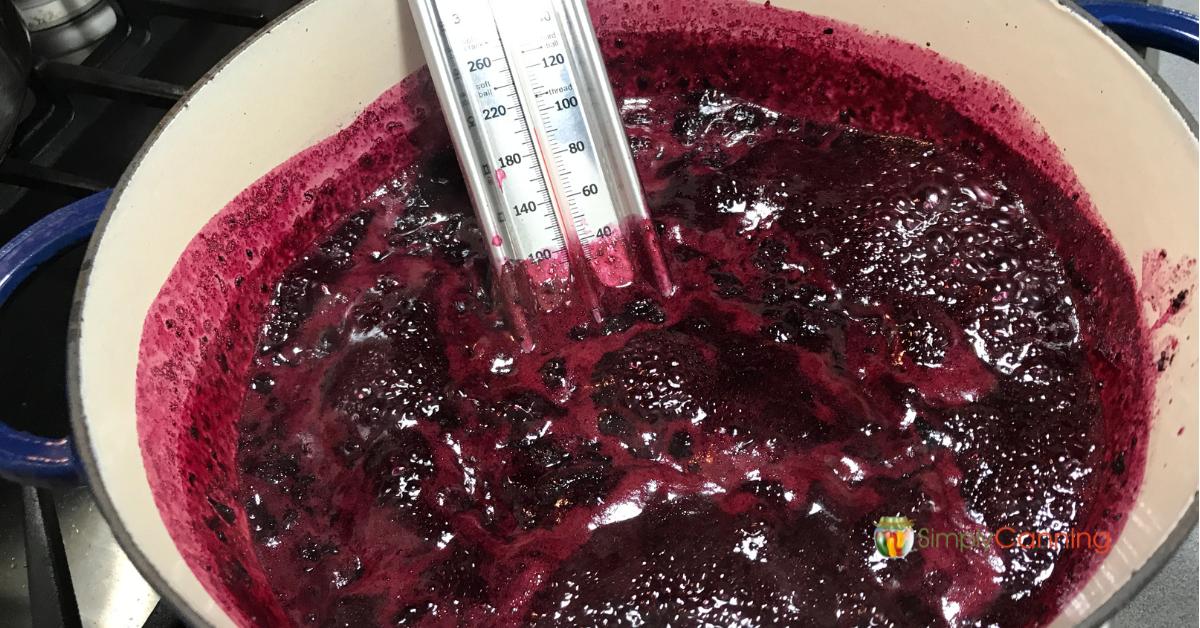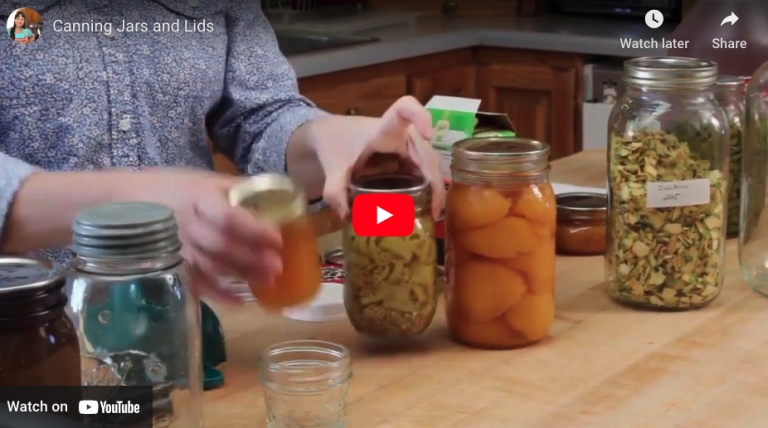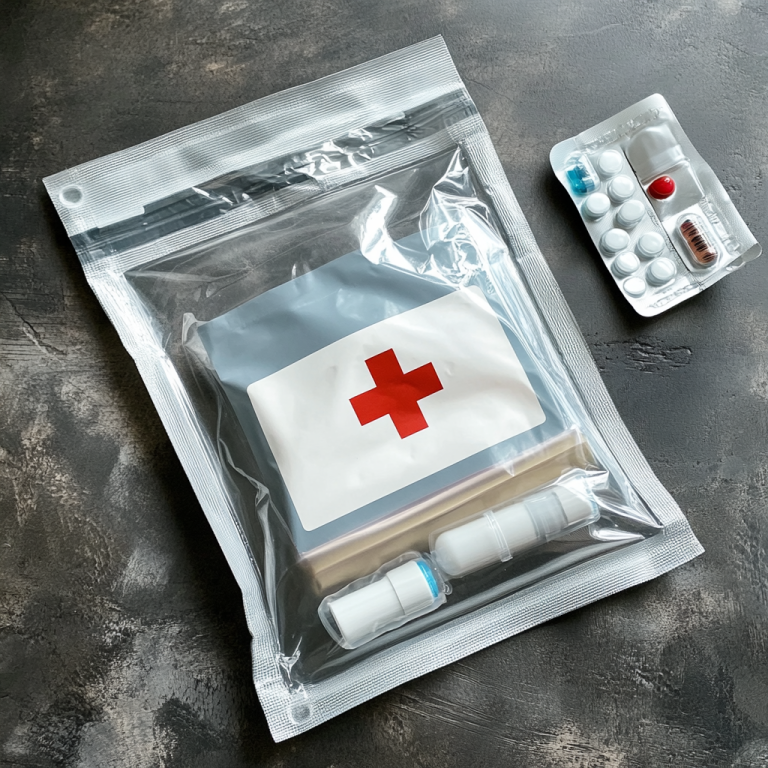Raspberry currant jam mixes the sweetness of raspberries and deep sour flavor of currants into a delicious, deep red jam! Canning instructions included. And you don’t even need additional pectin to make it, because there’s plenty in the berries already.
In this article, you’ll learn how to prepare currants into a pulp and then combine with raspberries and sugar, cooking down to gelling point and then processing the deep red jam in pint jars in the water bath canner. (Or you can just use it is a refrigerator jam)
How Many Jars of Raspberry Currant Jam Should I Expect?
This recipe yields about 2 pints of finished jam, though I processed in smaller sized jars. With jam, you won’t want to double the recipe to make more. Just make two separate recipes in separate pots. It’s hard to get jam to set up properly in larger batches.
Before You Start, Know Your Canner!
Before you start this project, if you’ve never used a water bath canner, please take a moment to read “How to Use a Water Bath Canner“. It’s a great resource that will help you understand how your canner works and guide you through the setup for any canning project.
How to Make Raspberry CurrantJam
Ingredients:
- 2 cups Red Currant Pulp
- 2 cups Crushed Raspberries
- 3 cups Sugar
- ¼ cup Water approximately – just enough to keep currants from sticking
Instructions for Making Raspberry Currant Jam:
Bring currants to a boil in the ¼ cup water until soft. Once cooked, press currants through a sieve or food mill. ??Measure out 2 cups of currant pulp. It’ll be thick that’s ok.
Crush raspberries. I use a potato masher to make this easy. You can also remove the raspberry seeds if you prefer jam with no seeds. Just do the same with the raspberries as you did with the currants.
When I made this I used black raspberries, (different than blackberries). Black raspberries are much more seedy than red raspberries so keep that in mind. If you prefer fewer seeds in your jam but don’t mind having some, you can remove the seeds from half of your raspberries while leaving a few in for the jam.
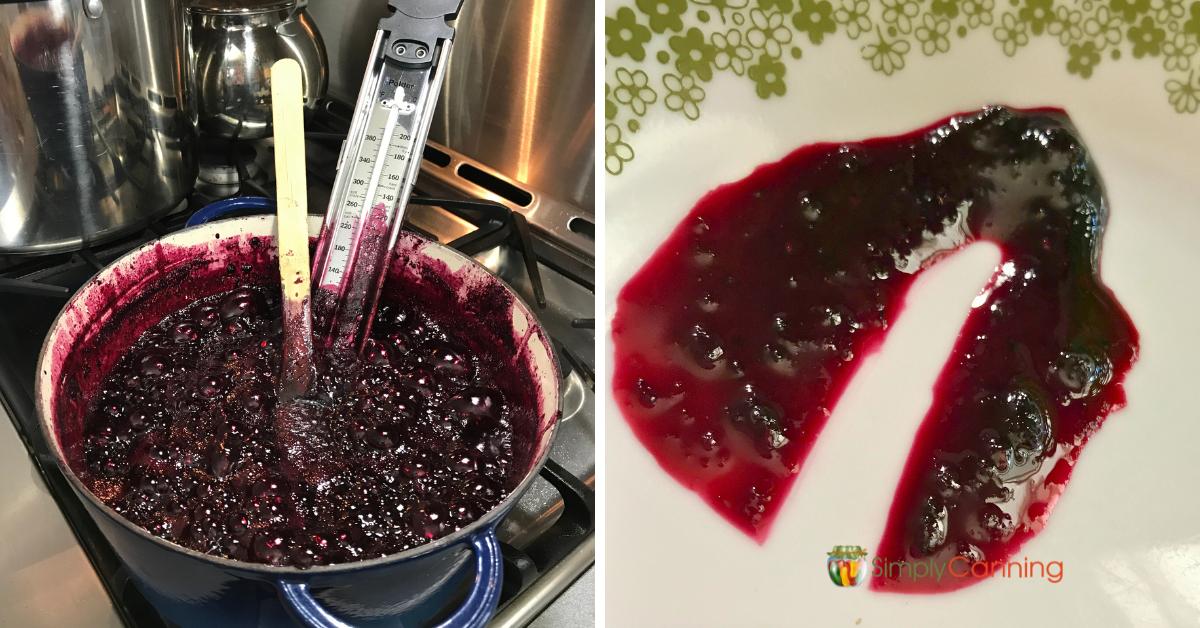
Combine the currant pulp and crushed raspberries in a large saucepan. Add sugar to the mixture, stirring until dissolved. Cook rapidly until it reaches your gelling point. Stir often to prevent sticking!
Don’t know how to determine your gelling point? You can read more about using the cold plate or temperature tests here.
I use a candy thermometer to check for the gel temperature.
Remove from the heat. Skim foam if needed. I didn’t find a lot of foam on my batch.
Ladle hot jam into hot jars, leaving ¼” headspace. Wipe the rim of the jar clean with a damp paper towel or cloth. This will give a clean surface for the canning lid to form a nice seal.
Place jars in your canner and process according to instructions in the recipe card below. Remember to adjust for altitude as needed.
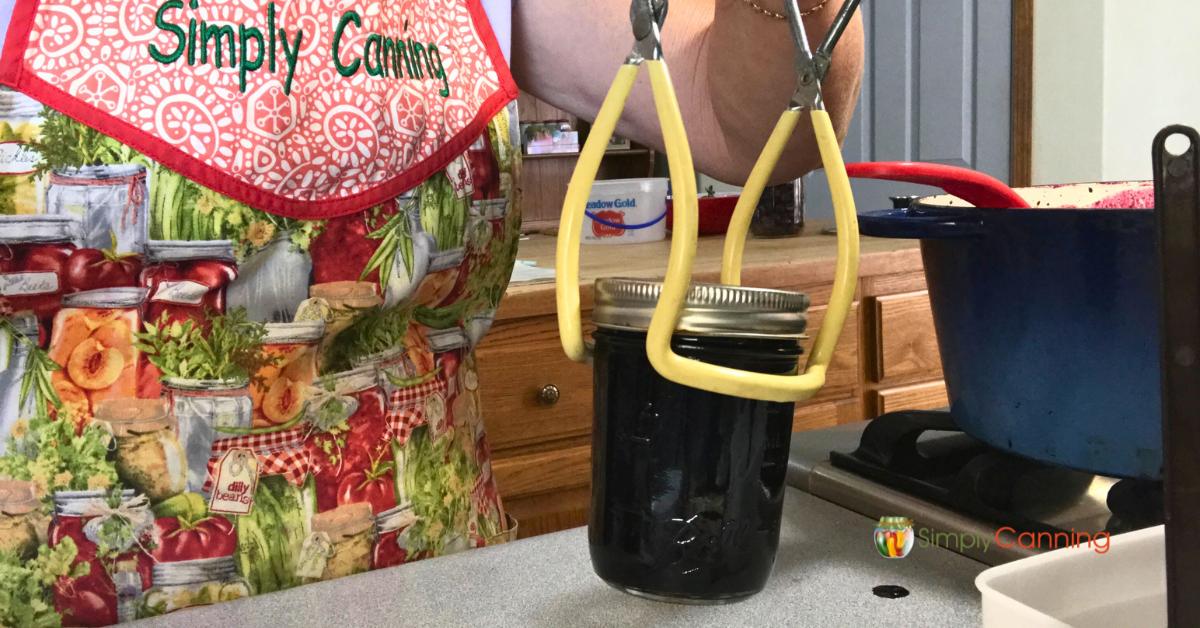
How Does This Jam Thicken Without Pectin?
While this recipe doesn’t have any other pectin added to it, the fruit still has plenty of natural pectin, which is why it thickens when boiled with sugar.
Can I make a low sugar raspberry currant jam?
Jam and jelly without pectin takes a LOT of sugar. If you’re trying to eat healthier, you might want to check out Pomona’s Pectin which can be used with far less sugar being added to your fruit.
If you just lower the sugar in this recipe it will affect how it sets up. It is the combination of sugar, pectin, and acids that create that nice jel in homemade jam. In this case the berries have enough acidity. Some jam recipes include adding lemon juice. This is the acid needed in those recipes.
Different Jar Sizes
Jam and jelly is often processed in half-pint jar sizes too. To can half-pint jars instead, just process for the same amount of time as you would a pint jar.
???All About Currants
Not familiar with currants? You’re not alone. This berry isn’t incredibly popular in the United States, partially because currants were banned for a time to help control a tree disease that attacked pines. They’re no longer banned, but they’re still not very common, compared to other fruit.
Currants are red (or sometimes black, though red is what we used in this recipe) berries in the gooseberry family that have a deeply sour flavor, making them perfect to pair with sweeter raspberries. [Please insert more details about the seeds/skins/flavor here – I (Rachel) have never had currants, so I don’t know much about them ? ]
(Note: Red currants are different than the dried “currant” raisins you might have seen in other recipes.)
Frequently Asked Questions
Yes currants contain a good amount of pectin. This is why we can make this without any added pectin and still get a nice jam.
Most recipes call for red raspberries, but I used Black Raspberries. Black Raspberries are seedier than red, but have the same sweet flavor.
Yes, you can freeze berries before making jam or jelly and many home canners do. Since you’re making a sweet spread, the texture of the fruit doesn’t really matter in this case. Thaw, keeping all the juices, and proceed with the recipe.
There are several different reasons why jam doesn’t set properly, including not using the correct proportions of ingredients, not cooking long enough, or trying to make too much jam at once.
Before You Go….
There are lots of other types of homemade jams and jellies you can make, if you don’t have currants on hand! Warning: Your mouth might water looking at these pictures. [internal link: https://www.simplycanning.com/jam-or-jelly/]
Recipe Card
If you have skipped here: This recipe card is a brief step by step of the recipe. To get more detailed explanations, and tips, Look at the article above.
Raspberry Currant Jam – Recipe Card.docx
H3 Sources
- Ball Book
- https://ask2.extension.org/kb/faq.php?id=571707







